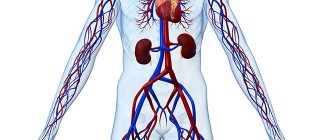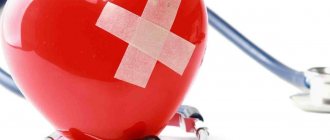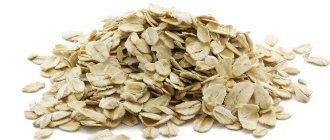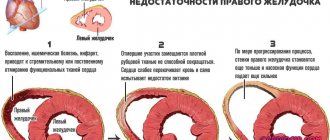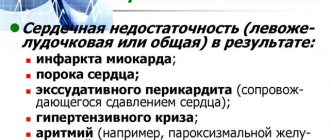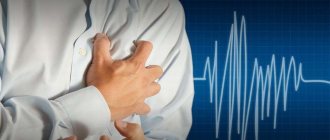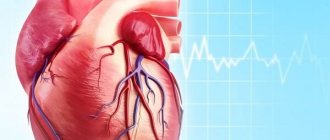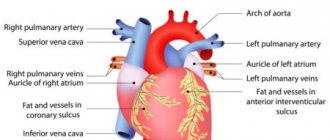Sudden death due to heart failure can overtake a person anywhere and in any condition. But it is not always sudden; in most cases there are certain warning signs that you should pay attention to.
Diseases of the cardiovascular system are very dangerous, since their manifestations are often minor, but death can occur. Sudden death from heart failure occurs quite often. Some argue that the condition of the patient’s body did not signal danger. But this is only at first glance. If you carefully consider the cause-and-effect relationship, you can clearly track the symptoms that accompany each stage of the development of heart failure. Today, death due to heart pathologies is becoming more common, and even children are exposed to it.
Sudden cardiac death is death that occurs due to heart disease within a short time after symptoms become apparent. It is characterized by the fact that people who were close to the patient confirm his normal condition without any fear or anxiety. It should also be noted that the causes of cardiac death are not injuries, violence or various diseases of the internal organs.
Sudden death of a person due to heart failure can be of 2 forms:
- the first is instant cardiac death (a person dies in a matter of seconds without any symptoms);
- the second is rapid cardiac death (a person dies within 1 hour, during which time symptoms in the form of an attack are observed).
The main symptoms of sudden death in heart failure are:
- fainting;
- convulsions;
- decreased breathing. At first it is frequent and noisy, but gradually the situation comes to a complete stop. This can happen within 1-2 minutes.
Heart pain can appear immediately before death, its nature is sharp and its intensity quickly increases. At this moment, the person experiences severe fear and anxiety.
A similar condition occurs during myocardial infarction. Sometimes the patient still has time to even complain about this condition.
Typically, signs of sudden death look like a seizure. A person experiences heart pain and severe psychomotor agitation occurs. He grabs the area of the heart with his hand, noisy breathing is heard, it gradually becomes faster, the patient tries to breathe through his mouth, gasping for air, as if he does not have enough oxygen. At the same time, sweating may occur and the skin on the face may turn red.
If ventricular fibrillation is activated during heart failure, which was previously asymptomatic, then the attack is somewhat different. The person feels very weak and dizzy. After this, he may lose consciousness and fall. Further, noisy breathing and the manifestation of convulsions are characteristic, since by this moment cerebral hypoxia has already developed.
During the examination, the patient has dilated pupils that do not respond to light; heart sounds may no longer be audible, more often than not this is because they are no longer present. The pulse will also be absent or weak. Clinical death develops literally immediately. Within 3-5 minutes after the heart stops working normally, irreversible changes occur in the brain. At this stage, the person needs resuscitation measures; only in this case can he be saved. Often, in case of sudden death from insufficiency, the ambulance does not have time to reach the patient.
There are also warning signs of sudden death, but they can be of varying intensity, and sometimes people simply do not pay attention to them. They appear several days before the attack and death.
- Pain in the chest, localization may be in the heart area. The nature of the pain is pressing or squeezing.
- Heartbeat disorders - tachycardia or bradycardia.
- Blood pressure is reduced.
- Weakened pulse.
- Blueness of the skin.
Only 25% of patients do not have these warning signs; in all others they appear within 1-2 weeks. Such signs are not always given due attention, especially if the person is elderly.
If such warning signs appear, this only means that an exacerbation of pathological conditions is occurring. This is a good reason to see a doctor.
Death at a young age
Sudden death due to heart failure in people under 35 years of age is still less common than in older people.
Early death from heart failure may occur due to hidden myocardial defects. Quite often, deaths occur during physical activity and sports. Statistics indicate that every year the number of such incidents in schools and colleges during physical education classes is steadily increasing. In young people, heart failure with sudden death is caused by hypertrophic cardiomyopathy. It is with this pathology that the myocardium thickens, and heart contractions become increasingly difficult. Statistics confirm that in 30% of young people who have suffered sudden death, hypertrophic cardiomyopathy is determined at autopsy. At this age, the disease is often asymptomatic and causes death.
Another common cause of death in young athletes is coronary artery anomaly. This anomaly is congenital, and during intense exercise the blood flow to the heart muscle is insufficient.
An increased risk of rapid death at a young age occurs with long heartbeat syndrome. It causes the heart to beat rapidly in a chaotic manner. This condition provokes loss of consciousness, and then death. A strong blow to the chest can also trigger ventricular fibrillation.
Precursors of sudden death in young people may be causeless fainting that occurs during physical exertion. This is already a sign that there are cardiac pathologies.
An attack before death may occur due to acute coronary insufficiency. This condition in old people manifests itself due to atherosclerosis, and in young people it occurs due to spasm, while the vessels are pathologically unchanged. This condition can occur from drug use (cocaine), excessive physical activity, or severe hypothermia. In such cases, at autopsy, no changes in the vessels will be visible, but there will be hypertrophy of the heart muscle.
The factors that provoke the development of pathology, which can lead to death, are completely diverse. Among them are:
- impaired blood supply to the myocardium;
- atherosclerotic vascular lesions;
- an increase in the myocardium of a pathological nature, as well as changes in its structure;
- cardiac dysfunction;
- thrombosis and blockage of arteries;
- metabolic disorders in the organ;
- toxic myocardial damage;
- a pathology in which fluid accumulates between the membranes of the myocardium;
- other diseases of the cardiovascular system, congenital and acquired.
There are also factors that increase the risk of sudden death. These include various chronic diseases of other organs, pathologies of the endocrine and nervous systems, and the presence of infections in the body. These risks include bad habits, obesity and physical overload.
As medical practice shows, sudden death in humans often occurs due to a narrowing of the lumen of the arteries by 4/5. This can be due to atherosclerosis, the formation of wall thrombi. With such lesions, many do not have characteristic symptoms. Due to this lesion, heart failure develops. And in combination with damage to the coronary bed, myocardial ischemia develops at one point. It is ischemic processes that underlie sudden death.
Read also: Heart failure Wikipedia
Another cause may be obstructive sleep apnea syndrome. In this case, breathing stops during rest. Patients who exhibit this syndrome die at night. This pathological condition provokes a stop of the sinus node, that is, the pacemaker, or a disturbance in the passage of the electrical impulse through the heart may occur.
Causes
Sudden death occurs as a result of cardiac arrest, which is caused by acute heart failure. A person dies within 1–1.5 hours after the first symptoms appear.
This process may look different:
- death occurs within a short time after the appearance of characteristic symptoms;
- sudden cardiac arrest, without any previous symptoms.
Natural death after cardiac arrest does not occur as a result of injuries or various injuries, but due to disturbances in the functioning of the cardiovascular system.
There are many reasons for the development of heart failure, which results in death, the main ones include:
- coronary heart disease;
- disturbance of blood flow in the area of the heart muscle;
- pathological enlargement of the heart;
- disorders of the structure and function of the myocardium;
- accumulation of fluid of various types between the membranes of the heart muscle;
- blood clots and blocked arteries;
- chronic and congenital diseases of the cardiovascular system;
- injuries of various types;
- functional disorders of metabolic processes;
- toxic damage to the body and the heart muscle in particular.
The risk of fatal deficiency is due to a number of factors:
- chronic diseases of internal organs;
- taking various medications;
- endocrine disorders;
- diseases of the nervous system;
- accession of infections;
- bad habits;
- excessive physical activity.
Most often, sudden death as a result of heart failure occurs in people who have had a myocardial infarction, as well as in hypertensive patients. But the risk group also includes people suffering from obesity and metabolic disorders; they are characterized by individual symptoms.
Prevention
Preventive medical measures to prevent sudden cardiac death are recommended for people who have been successfully resuscitated from an attack and those who are at risk. Such patients need to regularly visit a cardiologist and be examined. Healthy people also need to undergo regular preventive examinations. Such simple measures will help to identify various types of diseases in time and prevent them.
The following methods are considered primary prevention:
- Installation of a cardioverter-defibrillator is necessary for people who have already developed a heart rhythm disorder. This device is sutured under the skin and its electrodes are brought to the heart muscle.
- Taking antiarrhythmic drugs.
- Radiofrequency ablation of cardiac arrhythmias. In this case, the area that conducts extraordinary impulses through exposure to radio frequencies is destroyed.
- Revascularization of coronary blood flow and other surgical operations to restore heart function.
For people who already have heart problems, beta blockers are very effective in preventing sudden cardiac arrest. This is especially true for people who have suffered a myocardial infarction. After all, these patients most often die from sudden cardiac death.
Additional prevention methods are:
- Quitting smoking and alcohol. These factors negatively affect the condition of blood vessels, and alcohol provokes blood clots.
- Blood pressure control. This applies to everyone, but special attention should be paid to this by people who have a genetic predisposition to hypertension and are over 45 years of age.
- Proper balanced nutrition.
- Moderate exercise and walking are important.
- A person must have a routine of work and proper rest.
- Stressful situations must be avoided.
Sudden cardiac death can occur in anyone: both an adult and a child. The condition is very dangerous, since in some cases there are no signs of it, and its development is so unexpected and rapid that it is not possible to provide medical assistance to the person. Therefore, you should not neglect preventive measures and medical examinations, they can save lives.
How to prolong the life of a patient: expert advice
First, I want to clarify that there is primary and secondary prevention of sudden death. The first applies to people who have not experienced life-threatening conditions, but are at risk. In the second, a set of actions is aimed at preventing a repeat episode.
I would recommend that anyone who has a high risk of dying from a heart attack do the following:
- Take medications recommended by your cardiologist. These are beta blockers, ACE inhibitors, blood thinners (Acetylsalicylic acid), statins and omega-3 fatty acids. Use nitrates for ischemic disease.
- Stop arrhythmia attacks with class III medications (Sotalol, Amiodarone). In the absence of their effectiveness, agree to install a modern cardioverter-defibrillator. Good results are shown by radiofrequency ablation, which eliminates the source of excitation in ventricular forms of arrhythmia, and myocardial revascularization.
For primary prevention, people at risk need:
- Take appropriate drug treatment for a disease or condition that can be fatal (coronary artery disease, cardiac failure). Use blood thinners, lower cholesterol, drugs to load the heart and dilate coronary vessels.
- Systematically visit a specialist and conduct ECG studies and Holter monitoring. Call a doctor immediately if the condition worsens.
- Reconsider your lifestyle. This includes: giving up bad habits, maintaining a sleep-wake schedule, reducing physical activity, eating a healthy diet with limiting or eliminating fats and salt.
The relevance of the problem of sudden death due to heart failure remains high. Therefore, it is important to carry out mandatory prevention and follow all specialist recommendations. This will not only increase the patient’s life expectancy, but will also significantly improve its quality.
Signs of acute heart failure, how to help during an attack and what are the symptoms before death
Acute heart failure (AHF) is an emergency condition that develops when the pumping function of the heart is severely impaired.
Acute myocardial dysfunction entails circulatory disorders in the systemic and pulmonary circulation; as the pathological condition progresses, multiple organ failure develops, i.e., gradual failure of all organs and systems occurs.
Acute heart failure can develop as a complication of cardiac diseases, sometimes occurring suddenly, without obvious preconditions for a catastrophe. Next, you will learn what are the signs of acute heart failure and symptoms before death.
Factors in the development of AHF are conventionally divided into several groups:
- Organic myocardial lesions;
- Other cardiovascular pathologies;
- Non-cardiac diseases that do not directly affect the heart or blood vessels.
The list of causes of acute heart failure is dominated by damage to the heart muscle, in particular myocardial infarction, in which the death of muscle cells occurs. The larger the area of necrosis, the higher the risk of developing AHF and the more severe its course. Myocardial infarction, aggravated by AHF, is one of the most dangerous conditions with a high probability of death for the patient.
Inflammatory damage to the myocardium – myocarditis – can also lead to AHF. A high risk of developing AHF is also present during cardiac operations and when using artificial life support systems.
Acute heart failure is one of the most threatening complications of many vascular and cardiac diseases. Among them:
- Chronic heart failure (we talked about the reasons for its development here);
- Heart defects, congenital and acquired;
- Arrhythmias leading to a critical acceleration or deceleration of the heart rate;
- Arterial hypertension;
- Cardiomyopathies;
- Cardiac tamponade;
- Blood circulation disorders in the pulmonary circulation.
Accordingly, people who have a history of:
- Diseases of the heart and blood vessels;
- Bleeding disorders;
- Kidney diseases;
- Diabetes;
- Abuse of alcohol, tobacco, narcotic substances, harmful working conditions;
- Elderly.
General description of congestive heart failure
Blood is a liquid that circulates in blood vessels, delivering oxygen and other dissolved substances necessary to maintain metabolic processes to the body's cells. The same liquid collects substances that are formed as a result of metabolic processes, sending them for disposal.
The function of a pump that pumps blood through all vessels is performed by the heart. First, it pushes the blood out under high pressure so that it can penetrate into the smallest vessel, and then takes it back.
Congestive heart failure is a pathological condition that occurs when the heart, for some reason, loses the ability to fully pump blood through the vessels.
The contractility of the heart is reduced due to the destruction of myocytes - muscle cells, which are replaced by connective tissue that does not have contractility.
When the ventricles contract, blood enters the aorta and pulmonary trunk. If they cannot contract fully, some of the blood remains in the ventricles. In this case, the remaining blood enters the pulmonary circulation in the opposite way, stagnating in the vessels.
Precursors of OSN
Acute heart failure can develop suddenly. In some cases, AHF and sudden coronary death are the first manifestations of asymptomatic coronary heart disease.
In approximately 75% of cases of AHF, alarming symptoms appear 10-14 days before the disaster, which are often perceived as a temporary minor deterioration of the condition. It can be:
- Increased fatigue;
- Heart rhythm disturbances, mainly tachycardia;
- General weakness;
- Deterioration in performance;
- Dyspnea.
What causes heart failure?
Heart failure is a syndrome that develops against the background of various heart diseases. “In our country this is caused by inadequate treatment of arterial hypertension; in all European countries it is mainly coronary heart disease and myocardial infarction. This could be cardiomyopathy, myocarditis, heart disease, etc. There are many reasons,” notes Belenkov.
There are factors that increase the likelihood of developing or worsening heart failure. “The first and main thing is irregular treatment. The second is a cold. Any severe cold can cause an exacerbation, so such patients must be vaccinated. This is also a violation of the diet, alcohol intake, excessive physical activity, which is not recommended for the patient,” says the cardiologist.
Manifestations
According to the location of the lesion, AHF can be right ventricular, left ventricular or total. When the functions of the right ventricle are impaired, symptoms indicating congestion in the systemic circulation predominate:
- Sticky cold sweat;
- Acrocyanosis, less often – a yellowish tint to the skin;
- Swelling of the jugular veins;
- Shortness of breath not associated with physical activity, turning into suffocation as the condition progresses;
- Sinus tachycardia, decreased blood pressure, thready pulse;
- Enlarged liver, pain in the right hypochondrium;
- Edema of the lower extremities;
- Ascites (fluid effusion into the abdominal cavity).
In left ventricular acute heart failure, progressive congestion develops in the pulmonary circulation and is manifested by the following symptoms:
- Shortness of breath, turning into suffocation;
- Pallor;
- Severe weakness;
- Tachycardia;
- Cough with foamy pinkish sputum;
- Gurgling wheezing in the lungs.
It is customary to distinguish several stages in the development of AHF. The appearance of precursors in time coincides with the initial or latent stage. There is a decrease in performance; after physical or emotional stress, shortness of breath and/or tachycardia occurs. At rest, the heart functions normally and symptoms disappear.
The second stage is characterized by the manifestation of severe circulatory failure in both circles. At substage A, pallor of the skin and cyanosis are noticeable in the areas of the body furthest from the heart. Typically, cyanosis develops first at the tips of the toes, then the tips of the hands.
Signs of congestion appear, in particular moist rales in the lungs, the patient suffers from a dry cough, and possibly hemoptysis.
Swelling appears on the legs, the liver increases slightly in size . Symptoms indicating blood stagnation increase in the evening and fade away completely or partially the next morning.
Read also: ECG shows heart failure
Heart rhythm disturbances and shortness of breath occur with exertion.
At substage B, the patient is bothered by aching pain in the chest, tachycardia and shortness of breath are not associated with physical or emotional stress. The patient is pale, cyanosis affects not only the tips of the fingers, but also the ears, nose, and extends to the nasolabial triangle. Swelling of the legs does not go away after a night's rest and spreads to the lower part of the body.
The third stage, also known as dystrophic or final . Circulatory failure leads to multiple organ failure, which is accompanied by increasing irreversible changes in the affected organs.
Diffuse pneumosclerosis, liver cirrhosis, and congestive kidney syndrome develop. Vital organs fail. Treatment at the dystrophic stage is ineffective, and death becomes inevitable.
Forms of congestive heart failure
Congestive heart failure can take three forms:
- the left ventricular form is characterized by an increase in pressure in the left ventricle at the time of myocardial relaxation;
- the right ventricular or isolated form is characterized by an increase in pressure in the right ventricle at the time of myocardial relaxation;
- total form, in which both ventricles are affected, forming a wave of stagnation and the return of blood to the systemic circulation.
It should be noted that the right ventricular form of pathology is quite rare. Most often, a total form develops with damage to both ventricles. Since the heart is not able to pump blood in full, all organs begin to experience hypoxia. In this case, the hematopoietic system, brain, kidneys, lungs and organs of the endocrine system are most affected.
Oxygen starvation causes a reflex in the bone marrow, as a result of which it begins to more actively produce blood cells. The endocrine system also experiences no less stress, responding to a lack of oxygen by retaining water and sodium in the tissues.
Since blood flows much slower, the walls of the blood vessels increase their tone, trying to push it through. This in turn leads to stretching and thinning of the vascular walls, through which the liquid component of the blood penetrates into the tissue, causing swelling.
In response to oxygen starvation, there is an increase in the activity of the posterior lobe of the pituitary gland and adrenal glands, which begin to more actively produce the hormone aldosterone. This hormone acts on the kidneys, reducing the excretion of sodium from the body and retaining blood plasma in the tissues.
In the early stages, a person may not feel any manifestations of the disease due to the activation of a compensatory mechanism. For the time being, cells receive a sufficient amount of oxygen by increasing the heart rate. However, sooner or later the compensatory mechanism exhausts its capabilities, myocardial cells die, causing the development of clinical symptoms.
First aid
When the first symptoms indicating heart failure appear, you must:
- Sit the victim in a comfortable position, with his back raised;
- Provide access to fresh air, unfasten or remove clothing items that restrict breathing;
- If possible, immerse your hands and feet in hot water;
- Call an ambulance, describing the symptoms in detail;
- Measure the pressure, if it is low, give a nitroglycerin tablet;
- 15-20 minutes after the onset of the attack, apply a tourniquet to the thigh, change the position of the tourniquet at intervals of 20-40 minutes;
- In case of cardiac arrest, artificial respiration and indirect cardiac massage should be started (if you have the skills to perform it).
- While the victim is conscious, you need to talk to him and calm him down.
The ambulance doctors who arrived at the scene must stabilize the patient’s condition. To do this, do:
- Oxygen therapy;
- Elimination of bronchospasms;
- Pain relief;
- Pressure stabilization;
- Increased breathing efficiency;
- Prevention of thrombotic complications;
- Elimination of edema.
Symptoms
The clinical picture of the pathology may differ depending on the age of the patient; if he is an elderly person, then it will be brighter. It is also affected by the type of heart disorder: left-sided or right-sided.
Congestive heart failure symptoms include the following:
- feeling of weakness and fatigue;
- constant fatigue;
- exposure to stress;
- arrhythmia;
- the skin and mucous membranes have a bluish tint;
- even light physical activity leads to wheezing and shortness of breath;
- cough;
- lack of appetite;
- attacks of nausea and vomiting;
- attacks of suffocation at night;
- feeling of irritability and restlessness.
When there are congestive processes in the lungs, a person is bothered by a wet cough, sometimes with bloody discharge. With left-sided pathology, shortness of breath and wheezing occur on a constant basis, even at rest. With right-sided disease, a person suffers from frequent urination, mainly at night, swelling of the back, ankles and legs, abdominal pain and heaviness. Such patients are overweight, not because of fat, but because of fluid, and they also have swollen veins in the neck.
Also read: When is it necessary to treat intra-atrial block?
Near-death state
No one is immune from sudden death due to cardiac arrest. approximately 25% of cases, this occurs without visible preconditions ; the patient does not feel anything. In all other cases, so-called prodromal symptoms or precursors appear, the appearance of which coincides in time with the latent stage of development of AHF.
What are the symptoms before death in acute cardiovascular failure? In half of the cases, before death, an attack of acute pain in the heart region, tachycardia, occurs.
Ventricular fibrillation, presyncope, and severe weakness develop . Then comes loss of consciousness.
Immediately before death, tonic muscle contractions begin, breathing becomes frequent and heavy, gradually slows down, becomes convulsive and stops 3 minutes after the onset of ventricular fibrillation.
Consequences
The prognosis for severe forms of the pathology is often unfavorable, but if therapy is started at an early stage, and the root cause is not irreversible, then the patient can count on recovery, albeit partial, but with a long life span. You need to understand that congestive heart failure negatively affects the entire body. Therefore, there cannot be a complete recovery, however, with strict adherence to medical recommendations throughout your life, you can significantly increase its lifespan.
For older people, everything is not so optimistic, because often their body is more seriously worn out, which, against the background of congestive heart failure, often ends in death. For younger people, the danger of pathology is that its clinical manifestations are difficult to associate with it, which does not make it possible to make an accurate diagnosis and start therapy in a timely manner before the process becomes irreversible. This is the most common reason why people with such pathologies die.
Congestive heart failure (CHF) is a pathological condition characterized by the inability of the heart to pump the necessary amount of blood to maintain normal metabolism in the body's tissues. Stagnant processes can be left-sided or right-sided in nature. If the functioning of the right atrium is disrupted, a disorder such as cor pulmonale is observed, in which there is an accumulation of fluid in the tissues of the lower extremities. Such a disorder gradually becomes the cause of peripheral edema and fluid accumulation in the abdominal cavity.
With the development of left ventricular heart failure, blood stagnation occurs in the pulmonary circle, which provides blood supply to the lungs. Left-sided failure often leads to fluid accumulation in the lungs and can subsequently lead to swelling and respiratory failure. According to statistics, approximately 2% of the adult population have signs of deficiency. The mortality rate of this pathological condition is extremely high and exceeds 50%.
Prevention
Prevention of AHF is especially important for people at risk. Persons suffering from cardiac diseases must undergo preventive examinations with a cardiologist twice a year and follow the doctor’s instructions.
Many patients are prescribed lifelong maintenance therapy.
It is very important to lead a feasible active lifestyle , physical activity should cause a feeling of pleasant fatigue.
If possible, avoid emotional stress.
It is necessary to completely review the diet, give up fried, too spicy, fatty and salty foods, alcohol and tobacco in any form. More detailed recommendations regarding diet can only be given by the attending physician, based on the characteristics of past diseases and the general condition of the patient.
Emergency care for acute heart failure
The principles of emergency care for different forms of heart failure are the same, but there are still certain differences.
First aid for acute heart failure
First aid for right ventricular heart failure:
- lay the patient down, raising the body on a pillow (so that the chest is at an angle of 50-60 degrees);
- give a Nitroglycerin tablet under the tongue.
First aid for left ventricular heart failure:
- sit the patient down (make sure that the person does not bend his legs and keeps them perpendicular);
- give Nitroglycerin under the tongue;
- Secure the hips with tourniquets.
For any form of pathology, it is important to ensure the supply of fresh air. To do this, you need to open all the windows in the room (if possible, take the patient outside). Remove all belts, bracelets and other accessories from the body that can compress the skin and interfere with the flow of blood through the vessels. The chest must be freed from clothing, all buttons must be undone.
Important! The patient should not be left unattended until the ambulance arrives. If there are assistants, you need to prepare documents in advance and remember what the patient has been sick with recently, what medications he is currently taking, and whether there is a history of chronic diseases. This information will be needed by both the emergency team doctors and the hospital staff where the patient will be taken.
Video - Sudden cardiac death. Chronic and acute heart failure: symptoms, treatment, signs
Main causes of sudden death from heart failure
Root causes of death:
Young age period
- abuse of alcoholic and low-alcohol drinks;
- passion for tobacco products, narcotic substances;
- promiscuous sexual intercourse;
- violation of the rules of the daily diet;
- increased psycho-emotional sensitivity;
- hereditary diseases;
- congenital pathological abnormalities.
At the moment of sleep
Oxygen starvation caused by a stroke or cardiac arrest is the main prerequisite for the development of the syndrome. Death during sleep from heart failure often occurs in older people due to a disruption of the mechanism responsible for the contractility of the lungs. Even when recovering from a sleepy state, it is impossible to stop the symptoms of central sleep apnea.
Sudden infant death syndrome
Instant death of babies occurs due to cardiac arrest for the following reasons:
- the phenomenon of periodic breathing - apnea;
- overheating;
- insufficiency of serotonin receptors.
In addition to these pathologies, experts identify a number of factors that contribute to the occurrence of the disease:
- acute myocardial infarction;
- macrofocal sclerosis, as a consequence of a past heart attack;
- unstable type of angina;
- changes in heart rate under the influence of ischemia;
- ventricular asystole;
- damage to the coronary vessels;
- diabetes;
- arterial hypertension;
- chronic nicotine addiction;
- short-term loss of consciousness;
- imbalance of water and electrolyte metabolism.
Treatment options for congestive heart failure
In the initial stages of the disease, sick people are able to go to work as before. Therefore, treatment most often does not require placing a person in a hospital. To begin with, patients are advised to adjust their diet by reducing salt and fluid intake.
As the main treatment for congestive heart failure, certain groups of drugs are used, which in combination have a systemic effect on the heart and blood vessels.
These include:
- glycosides are suppliers of energy necessary for the formation of myocytes and enhancing myocardial contractility;
- diuretics help remove excess fluid from tissues;
- preparations containing potassium, B vitamins, as well as vitamin C and rutin enhance the contractility of the heart muscle and normalize metabolic processes in the tissues of the heart.
The remaining drugs are selected based on the cause of the development of congestive heart failure. For example, with arterial hypertension, patients are prescribed drugs that lower blood pressure. If the cause of CHF is inflammation of the pericardium, the patient is prescribed antibiotics.
Diagnosis of sudden death syndrome
The definition of sudden death syndrome is based on symptoms related to natural death:
- lack of consciousness - no reaction to external stimuli of any origin;
- breathing disorders - within 20 seconds there are no movements of the chest, no inhalation and exhalation (agonal convulsive breaths are not considered normal ventilation and are not taken into account during resuscitation);
- when removing the EGC, cardiac muscle asystole, ventricular flutter, and an electromechanical type of dissociation are detected.
Sudden death can suddenly strike anywhere:
Cardiac dysfunction occurs at any age - both young and old. The main signs of cardiopathy can begin 7-10 days before death and manifest themselves:
- periodic painful sensations in the chest, with a predominance in the retrosternal space;
- shortness of breath - shallow breathing, with frequent sighs;
- constant weakness;
- increased fatigue;
- rapid heartbeat;
- periodic attacks of arterial hypertension;
- short-term fainting states.
At the time of an attack, a person loses consciousness, the heart stops, and the blood supply to parts of the brain stops.
In a quarter of cases, sudden death occurs without external signs. Over the course of a week, some patients complain of breathing problems, pain in the chest, and a state of general weakness. Clinical manifestations of the syndrome are revealed:
- falling into unconsciousness;
- inability to feel the pulse in the carotid artery;
- maximum dilation of the pupils - without a contraction reaction (when exposed to light);
- lack of independent breathing or periodic convulsive intakes of air under the influence of agony;
- transition of skin color towards gray-bluish.
Methods for diagnosing congestive heart failure
Congestive heart failure can only be detected by conducting certain instrumental studies. However, first of all, the doctor collects anamnesis and also conducts a survey of the patient regarding hereditary predisposition to cardiovascular diseases. It also finds out what reason can provoke shortness of breath and other manifestations of the disease.
The main methods of instrumental diagnostics include the following
- ECG, including with stress;
- Echo-CG;
- Doppler scanning of the heart and blood vessels;
- vascular angiography;
- chest x-ray;
- laboratory tests of blood and urine.
First Aid Techniques
Unexpected cardiac arrest often occurs outside of medical facilities. The general rules for providing first emergency aid in the event of a clinical emergency should be known to all members of society who often come into contact with a large number of people. Primary resuscitation carried out in accordance with all the rules will give the patient a chance to wait for emergency help to arrive.
Read also: Heart failure symptoms reviews
Emergency care scheme
In an unconscious state, the patient often experiences occlusion of the airways by the root of the tongue and the epiglottis. The pathological condition is observed as a consequence of the lack of skeletal muscle tone. The condition can develop in any position of the patient’s body, and in the case of tilting the head forward, it occurs in 100% of cases. To ensure minimal accessibility of the respiratory tract for air flow, the Safar technique is more often used, performed in stages:
- Place a cushion under the cervical region and tilt the victim's head back.
- Move the lower jaw forward evenly.
- Open your mouth.
After ensuring the availability of the airways, artificial ventilation is used. The option is called “mouth to mouth”. Mechanical ventilation also requires compliance with the following rules:
- One hand should be placed on the sick person’s forehead, and the other hand should be held tightly to the nose. When performing resuscitation measures, air is inhaled directly into the victim's lungs.
- When the patient's chest remains raised, the resuscitator moves away to allow passive exhalation.
The volume of incoming air during manipulation is more important than a certain rhythm. After some time, the presence of a pulse in the carotid artery is checked - if it is present, then mechanical ventilation is continued for a certain period. If there is no response to the event, move on to the next method.
The next stage is called “indirect cardiac massage.” It is produced to artificially maintain blood circulation.
- the patient must be placed on a flat surface;
- designate the points of influence - the xiphoid process is determined, you need to move two fingers up from it (fingers are positioned transverse to the body);
- the hand is placed on the border between the middle and lower lobes of the sternum, so that the fingers lie parallel to the costal arches;
- pushes are performed with the upper limbs straightened at the elbows.
The total depth of the pushes should not exceed 5 cm - to avoid rib fractures, the speed is about 100 pushes in 60 seconds. Periodically take breaks to perform artificial ventilation.
Manipulations to restore absent cardiac activity are stopped:
- when a pulse is detected in the main arteries;
- If there is no performance within half an hour, brain death is declared during this period.
The exception for continuing resuscitation measures is:
- drug overdose;
- electric shock to the victim;
- drowning;
- decrease in body temperature below 35 degrees.
Resuscitation measures
Cardiopulmonary resuscitation is represented by a strict algorithm of actions aimed at saving a person’s life. Sudden cardiac arrest or respiratory dysfunction requires an immediate response from medical professionals - the countdown begins from the moment symptoms occur and lasts a matter of minutes. The pulmonary-cardiac resuscitation scheme involves performing sequential actions:
- Determining the general condition of the victim, based on which the necessary manipulations for rescue are selected.
- The primary stage of CPR begins with artificial ventilation and chest compressions of the heart muscle.
- The lack of the desired effect leads to the use of defibrillation techniques - exposure to electrical impulses.
Specialized medical care includes:
- Artificial ventilation of the lungs using tracheal intubation.
- Drug support with the introduction of certain medications:
- catecholamines – “Atropine”, “Adrenaline”;
- antidiuretic hormonal drugs - “Vasopressin”;
- suppressive ari, "Kordaron";
- fibrinolytics – “Streptokinase”;
- intravenous administration of electrolyte solutions.
Properly performed resuscitation procedures, in most cases, save the patient’s life. The majority of deaths occur in patients who did not receive primary care before the ambulance arrived.
Signs of the disease
The development of congestive heart failure can be suspected based on the following signs:
- by a feeling of lack of air and shortness of breath;
- due to causeless weakness throughout the body;
- by rapid heartbeat;
- by a feeling of heaviness in the right hypochondrium resulting from an enlarged liver;
- by a painful cough;
- for attacks of cardiac asthma that cause fear of death;
- by swelling of the lower extremities and lumbar area, if the patient is lying down;
- by an increase in abdominal volume resulting from fluid accumulation.
It should be noted that the earliest symptom of congestive heart failure is shortness of breath. And if other signs are not always present, shortness of breath accompanies a person throughout the entire course of the disease.
Its occurrence is caused by excess carbon dioxide in the blood. And if at the initial stage it can only occur when walking or climbing stairs, it later intensifies in a lying position. This factor is explained by the fact that blood accumulates in the lungs during heart failure, the volume of which increases when a person assumes a horizontal position. Therefore, sick people are often forced to sleep sitting up.
Other manifestations of the disease include the following:
- decreased resistance to stress, expressed in increased irritability;
- decreased appetite;
- nausea and vomiting;
- bluish skin on the hands, feet and lips.
Distinctive symptoms of different types of heart failure
If congestion occurs in the pulmonary circulation, this indicates the development of left ventricular AHF, while dysfunction of the right side of the heart causes pulmonary embolism and leads to right ventricular failure.
In the first case, a person feels unable to breathe normally due to sudden suffocation and severe shortness of breath, while at the same time there is an acceleration of the heartbeat, a decrease in blood pressure and paleness of the skin. The presence of all of the above symptoms, as well as arrhythmia, weakness and cough, indicate a high probability of pulmonary edema, when foam with blood is released from the mouth, cold sweat is released, and when listening, moist rales in the lungs are diagnosed. Another sign is orthopnea, when a person cannot change position and remains in a half-sitting position with the limbs down for a long period.
Right ventricular acute heart failure also has characteristic symptoms, such as fluid accumulation in the abdominal cavity, enlarged liver, pain in the chest area, swollen veins in the neck, numerous swelling, as well as blue discoloration of the fingers, chin, ears and nose. By the way, if there is a disturbance in the large circle of blood supply, the symptoms appear much faster, which is associated with greater endurance of the left ventricle.
Emergency Algorithm
The attack itself can take from a couple of minutes to several hours, but there is often a way to determine its approach in advance. To do this, it is enough to monitor your health, in particular, visit a doctor if swelling does not go away for several days or shortness of breath is tormented. However, you shouldn’t rule out the danger of sudden suffocation either - the main thing is to quickly stop the symptoms and contact professional doctors as soon as possible. Under no circumstances should you panic, as this will only make you feel worse.
How to help someone with heart failure
In the acute form of the disease, it is necessary to immediately stabilize the patient's condition. Calling an ambulance, measuring blood pressure and providing a person with a flow of fresh air (if he is in an enclosed space) is the very first and most important thing that those around him should do to reduce the risk of death of a person. Since the acute form of heart failure has specific and vivid symptoms (pulmonary edema with bloody foamy sputum and, for example, a heart attack, which causes severe pain), even those people who do not have knowledge about heart failure will be able to understand that the patient urgently needs help doctors, otherwise the death of a person will follow.
Important!! When an acute form of the disease occurs, the patient often panics and may not control his actions. You should reassure the person and control his actions, as the patient can cause irreparable harm to his health.
It is necessary to constantly be close to the patient, since there are often cases when such people begin to take a large number of medications prescribed by their attending physician, which is absolutely forbidden to do, since this can lead to the death of the person even before the doctors arrive.
In some cases, when there is a person next to the patient who has at least a little knowledge in medicine and understands what is happening to the patient - is able to adequately and clearly explain the symptomatic picture to doctors (even at the time of conversation with the ambulance dispatcher), then he can receive the necessary recommendations on taking medications.
The chronic form of the disease often does not bother the patient much and he can ignore the increasing symptoms, which will ultimately lead to death. Chronic heart disease is much less likely to lead to the death of the patient, since people with this disease often attend a routine examination by a cardiologist, who, if necessary, adjusts drug therapy. Only in case of refusal to take medications or intense physical activity, as well as severe emotional experiences, can the chronic form become acute. Then people simply do not have time to turn to doctors or even call someone for help - death overtakes them.

